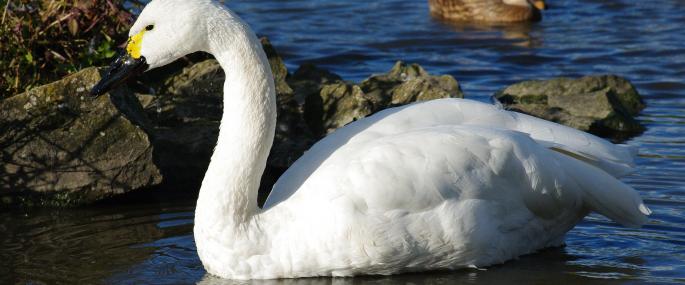2011-05-05 12:53
Scientific Name:
Cygnus columbianus bewickii
One of the two 'wild swans' that spend their winters in this country, Bewick's Swans arrive from Siberia in late autumn returning north again in the spring. They will often feed on fields during the day, eating crops, before coming in to roost on open water.
How to identify:
The smallest British swan, Bewick's Swans are white with a yellow and black bill. They can be distinguished from Whooper Swans by the less extensive yellow markings on their bill.
Where to find it:
Nests in Siberia. Spends the winter in a few areas of the country, mainly East Anglia, the Severn Estuary and Lancashire.
How people can help:
The survival of our waterbirds is threatened by the loss and degradation of many of our wetland habitats. The Wildlife Trusts manage many wetland nature reserves for the benefit of the wildlife they support. You can help by supporting your local Trust and becoming a member; you'll find out about exciting wildlife happenings, events on your doorstep and volunteering opportunities, and be helping local wildlife along the way.
Statistics:
Length: 1.2m Wingspan: 1.9m Weight: 5-7kg Average Lifespan: 9 years
Conservation status:
Classified in the UK as an Amber List species under the Birds of Conservation Concern review and as a Priority Species in the UK Biodiversity Action Plan.
Did you know?:
Individual Bewick's Swans can be identified by looking at their bill: the pattern of black and yellow is as unique as a fingerprint.
Seasons:
Spring
Autumn
Winter
Image:
